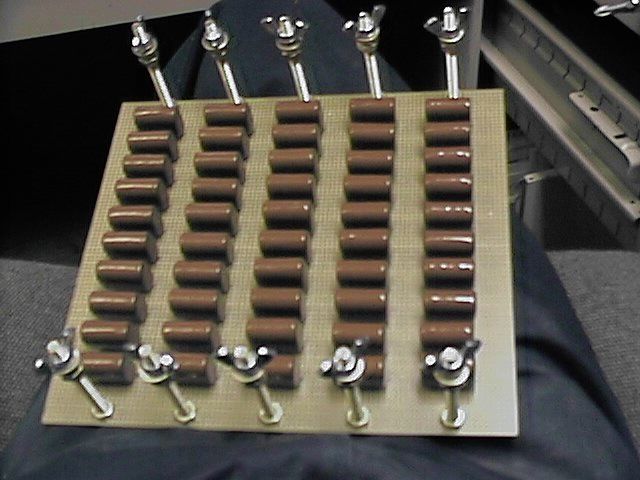
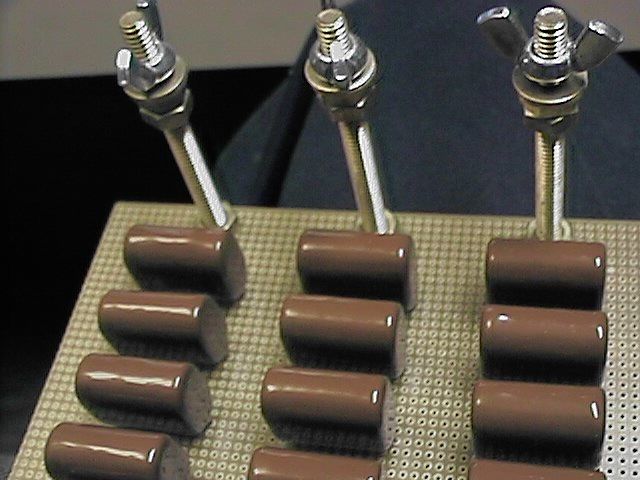
MMC Tesla coil capacitors have become almost the standard TC capacitor in less than a year. They are very reliable, inexpensive, easy to make, and have no oil. Basically, they are made by stringing many small commercial polypropylene capacitors together the form a larger capacitor that can withstand the high voltage and high current of Tesla coils. MMCs have been extensively studied and characterized in TC applications.
I like to use Panasonic ECW-H 16563JV 1600VDC 0.056uF Polypropylene caps from DigiKey (# P10516-ND) but many other brands work too. They have to be metalized polypropylene types rated for around 1500 volts. We have found that the DC voltage rating can be used as the peak AC voltage rating. In fact "I" like to push their voltage beyond those ratings a bit to save money. The caps are very tough and can withstand about 3000 volts in testing.


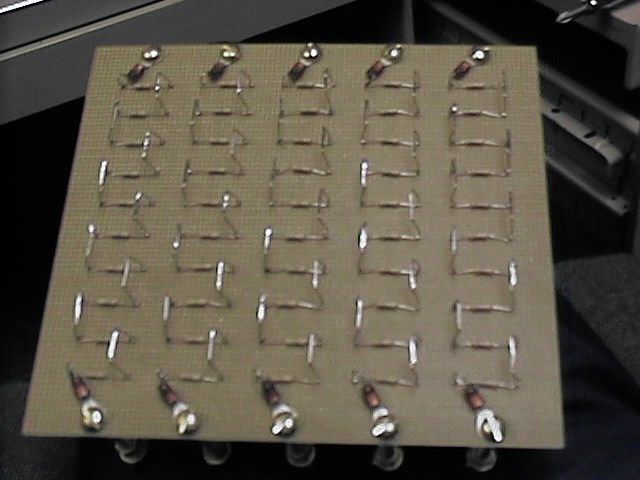
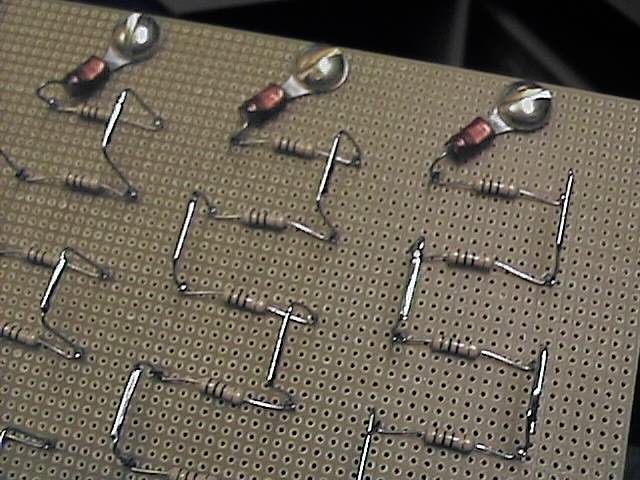
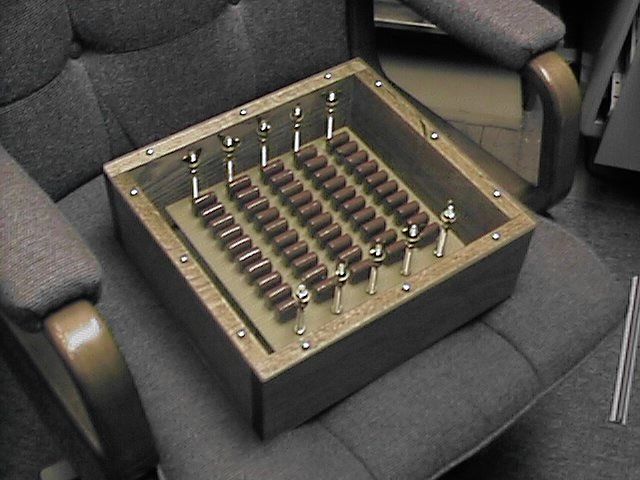
This document explains how the power handling is calculated and this program will do the calculations and design for you.
Here is the known
GOOD caps and known BAD caps list!
Here are the essential tips in building them:
1. Always make the strings individually
selectable so you can get many
different values of capacitance.
2. Leave a small (~1/8")air space
in between the caps in a string for
air flow and to leave room
if one fails.
3. Be sure to leave a good distance
(~1" or more) between the strings
so if some are not used,
that active strings will not arc to inactive strings.
4. Put 1/2W 10Meg ohm (or some close
value) resistors across each cap for
safety and balancing.*
4.1 Do not place the resistors directly against the capacitors! The thin capacitor shell may not provide good insulation. The capacitors need a good space between them and other objects to insure they will not arc over. I would recommend about 1/4 inch clearance between the capacitor cases and other things.
5. Be sure the resister leads are
actually wrapped around the cap leads
so they will stay in place
if the solder gets hot or the solder connection
was not sound.*
6. Remember that the whole cap is
at very high voltage so it needs to be
mounted away from metal and
in a safe location.
7. Perfboard, like DigiKey# V1011-ND, makes mounting the caps really easy.
7.1 Be careful when bending the leads not to damage the connections inside the capacitor. Tubular style caps can especially have fragile lead connections.
8. Do not connect the caps between
strings together even though they are
at the same potential.
This defeats the cap's self healing and value
selection features.
9. Even though the cap leads seem
small, use heavy primary wiring and try
to use brass or copper connections
as with any Tesla cap. Bringing the ends
of each string to 1/4" brass
bolts works well.
10. Remember that even a small EMMC
cap can be just as dangerous as many
big oil filled caps...
The resistors go a very long way in making them safer
but don't get careless.
* People have gotten shocked by
not doing these.
Here are some other papers on poly caps:
LT POWER CAPACITORS - Trends in Technology and Review of Performance
The Development and Performance
of High Reliability, High Energy Density Pulsed Discharge Capacitors
OneTwoThreeFourFiveSix
Here are a bunch of PDF files about poly caps from the manufacturers
Here are some early
pics from my first MMC cap testing on November 12 of 1998.